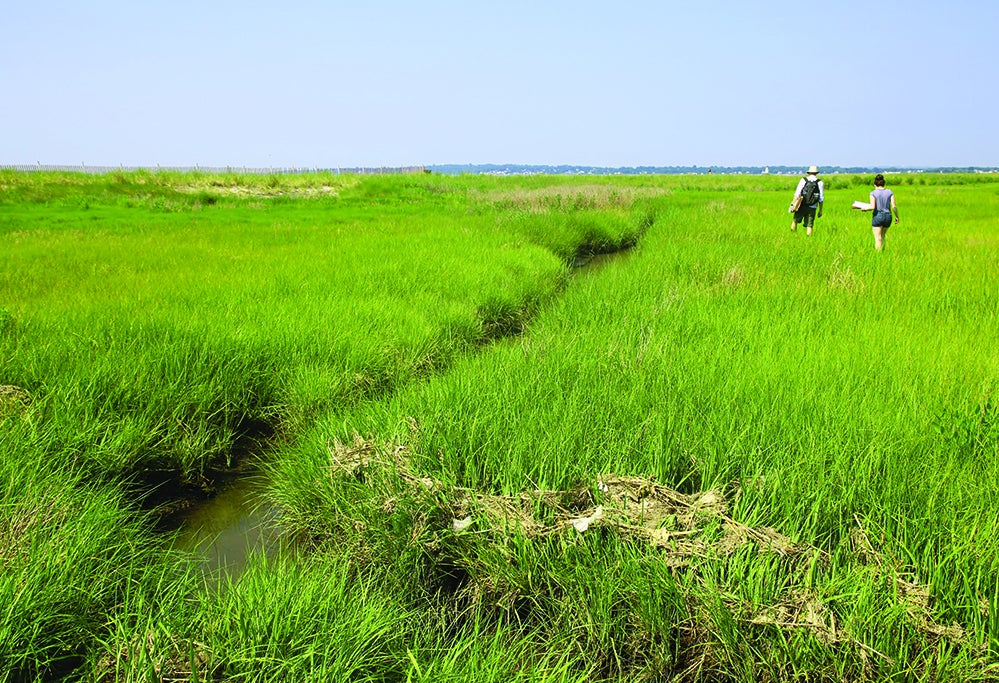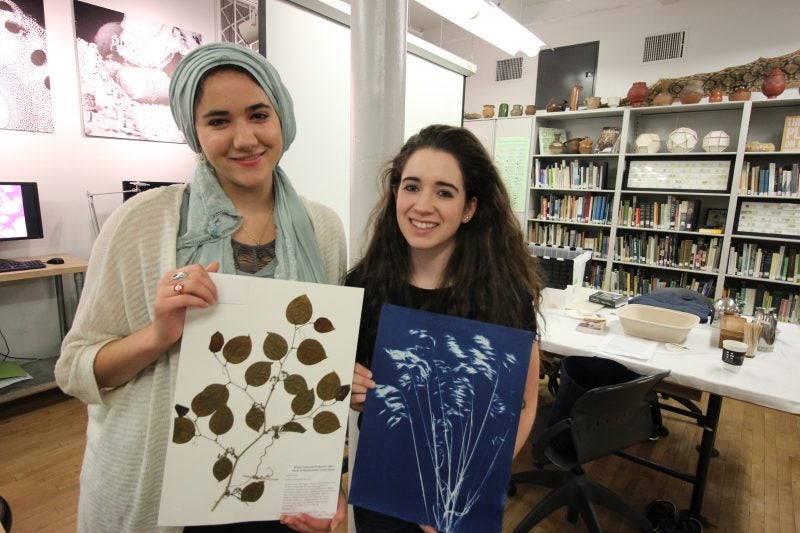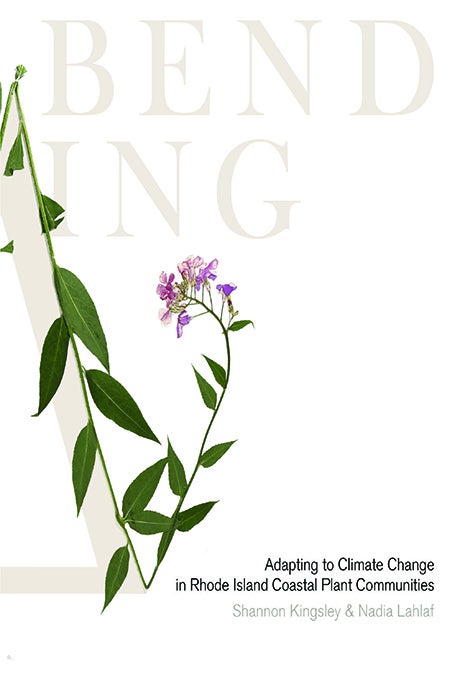
When Shannon Kingsley and Nadia Lahlaf first arrived at the Rhode Island School of Design’s Edna Lawrence Nature Lab in May, their goal was clear: produce a tangible product highlighting how climate change has affected plant life in Rhode Island’s salt marshes since the 1950s.
Getting there, however, was a road left wide-open by mentors Dr. Timothy Whitfeld, assistant professor of ecology and evolutionary biology at Brown, and the Nature Lab’s Dr. Jennifer Bissonnette and Lucia Monge.
“They told us from the start that it was up to us to find our own direction and decide what kind of concrete thing we would be producing,” explained Lahlaf, a fourth-year student from Billerica, Mass., earning a dual degree in computer science and illustration from Brown and RISD, at the time. “Every day we had a different thing on the agenda, and our experiences were about finding what was interesting to us and then figuring out how to convey the information about salt marsh ecology that seemed important.”
On some days, Lahlaf and Kingsley, a sophomore studying English and ethnobotany at Brown, collected plant specimens from salt marshes at Tillinghast Place, a RISD satellite campus located alongside the Providence River.

During others, they examined plant species at Brown’s Herbarium or took highly detailed images with the Nature Lab’s “macro-pod,” a camera which snaps nearly 65 images of an item over time and compresses them into one, creating a high resolution, 3D representation.
After about six weeks, the SURF students had to decide upon a medium to showcase their research: an illustrated book detailing specific plant species and how they had been impacted by climate changes in Narragansett Bay.
“As an ethnobotany major, I have taken a lot of classes about the history of science and people’s uses of plants for medicine and religious rituals,” said Kingsley, a North Attleboro, Mass., native, about her interest in the SURF project. “We can learn a lot by combining humanities and sciences.”

Both SURFs were able to explore their educational interests through creating the booklet. While Kingsley took charge of writing compelling, scientifically accurate copy about Rhode Island’s flora, Lahlaf put her creative juices to work by organizing the book’s plant images and developing salt marsh illustrations.
“We have different strengths and backgrounds, and the biggest challenge was finding our own direction,” emphasized Lahlaf. “I really enjoy the problem-solving aspect of computer science, and drawing and painting are things I have done since I was little.”
“I love to read and write, it is really as simple as that,” added Kingsley.
Although Kingsley and Lahlaf are unsure of what they will do after graduation, the SURFs have produced an informative and visually compelling product, the fruit of a successful 10-week partnership. Moreover, their project highlighted the opportunities, and challenges, of working across disciplines to bring diverse perspectives and skills together around a common goal.
“We did everything collaboratively, which was an awesome experience,” said Lahlaf as Kingsley nodded in agreement.

 RI NSF EPSCoR is supported in part by the U.S. National Science Foundation under EPSCoR Cooperative Agreements #OIA-2433276 and in part by the RI Commerce Corporation via the Science and Technology Advisory Committee [STAC]. Any opinions, findings, conclusions, or recommendations expressed in this material are those of the author(s) and do not necessarily reflect the views of the U.S. National Science Foundation, the RI Commerce Corporation, STAC, our partners or our collaborators.
RI NSF EPSCoR is supported in part by the U.S. National Science Foundation under EPSCoR Cooperative Agreements #OIA-2433276 and in part by the RI Commerce Corporation via the Science and Technology Advisory Committee [STAC]. Any opinions, findings, conclusions, or recommendations expressed in this material are those of the author(s) and do not necessarily reflect the views of the U.S. National Science Foundation, the RI Commerce Corporation, STAC, our partners or our collaborators.